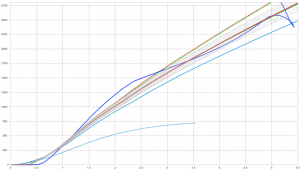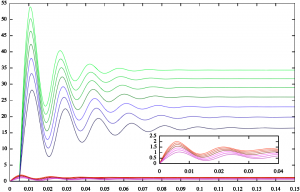A mathematical model is a way to describe a real world system or process in a mathematical form. The model will consist of mathematical functions and equations. The development of the mathematical model is known as mathematical modelling.
Within the context of the work undertaken by CyberThinc Limited, the mathematical modelling process involves the initial development of mathematical models, and then the use of computational techniques to develop solutions, using either programming languages such as C, or code written in the Matlab language and run using the GNU Octave Mathematical software.
Mathematical Modelling Areas
The mathematical modelling is used within CyberThinc’s consultancy in Strategic Foresight, Technology Trend Analysis and Systems Engineering, with the type of mathematical modelling undertaken being varied, ranging from economic modelling of Kondratiev waves and their harmonics, through use of game theory for strategic foresight / future forecasting, reliability modelling, risk modelling, perturbation theory, to physics and engineering problems requiring fluid flow models, combustion models, thermodynamic models, solar physics models, trajectory models and acoustic models.
Mathematical Modelling Techniques
The techniques used by CyberThinc Limited are as varied as the types of mathematical modelling, and range from Game Theory, Iteration techniques such as Euler and Runge-Kutta, Weibull Distributions to Markov Chain Monte Carlo Methods and Karhunen Louve Transforms
Model Accuracy
The quality / integrity of a mathematical model is dependent on how closely it aligns with real world results from tests and experiments, and this is an area where we we very keen to ensure thoroughness. It is sometimes the case that a mathematical model will not coincide with reality, and this in itself can provide important insights into how a theory or hypothesis may not be correct, and may require changes.


